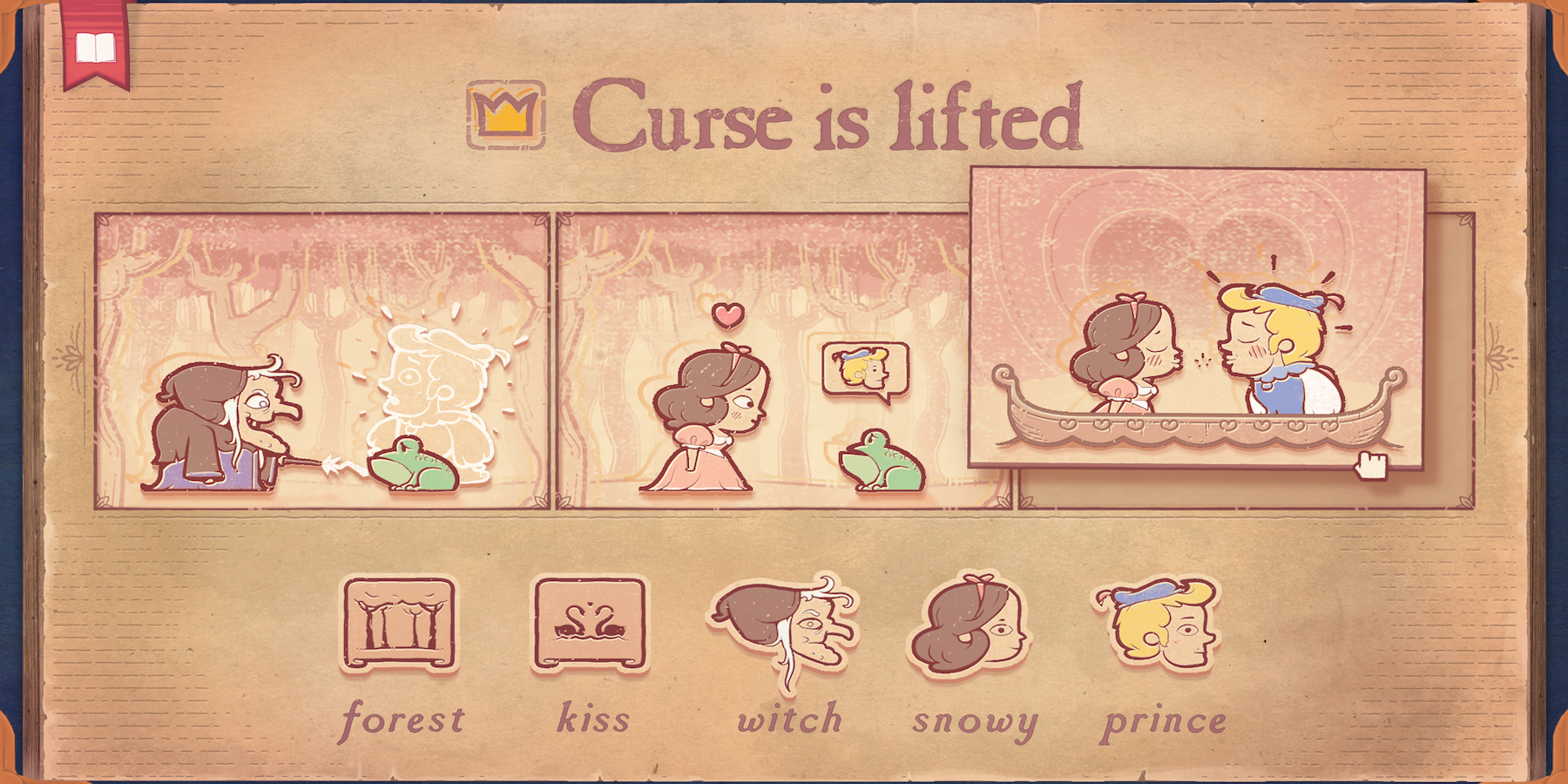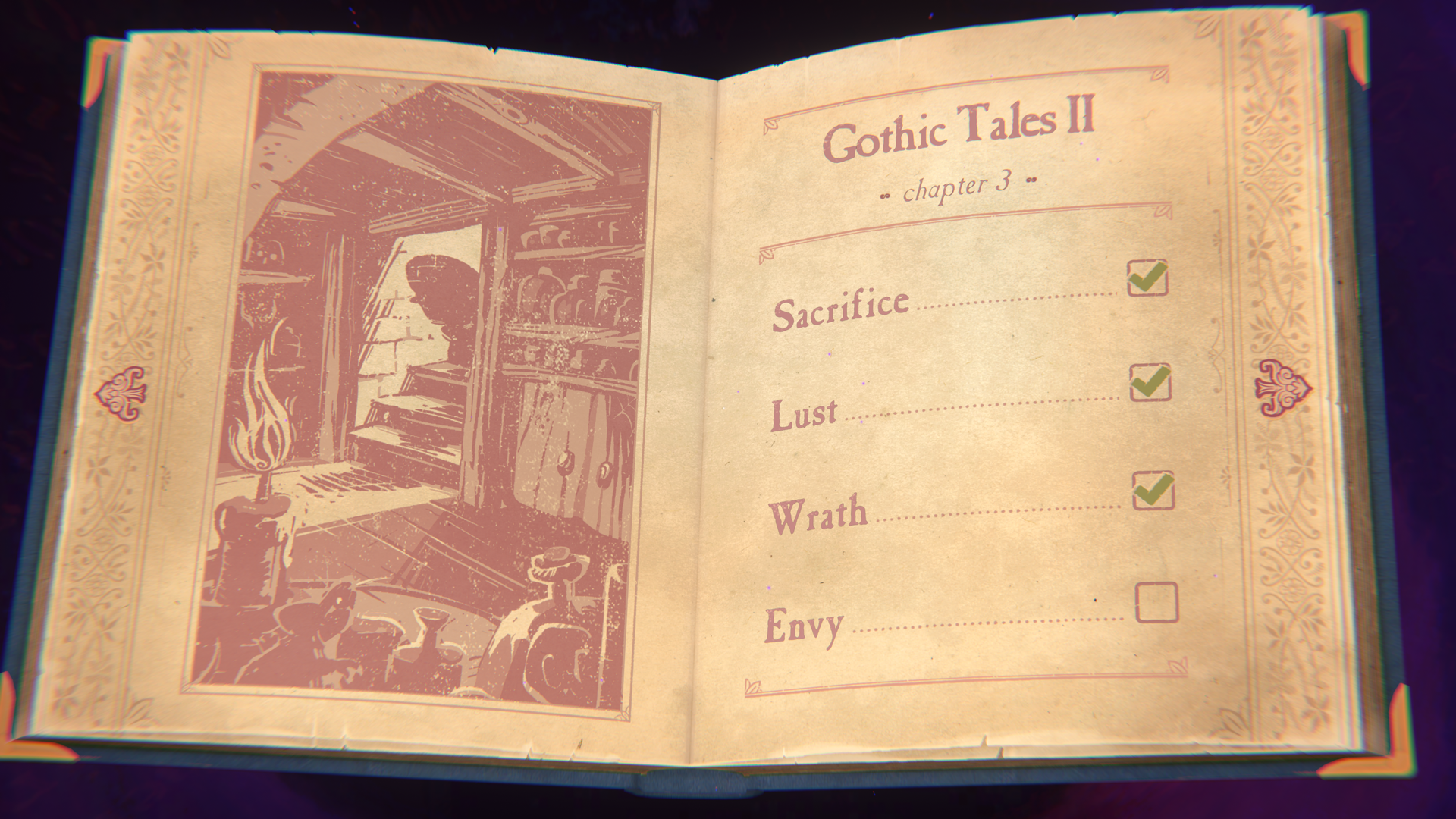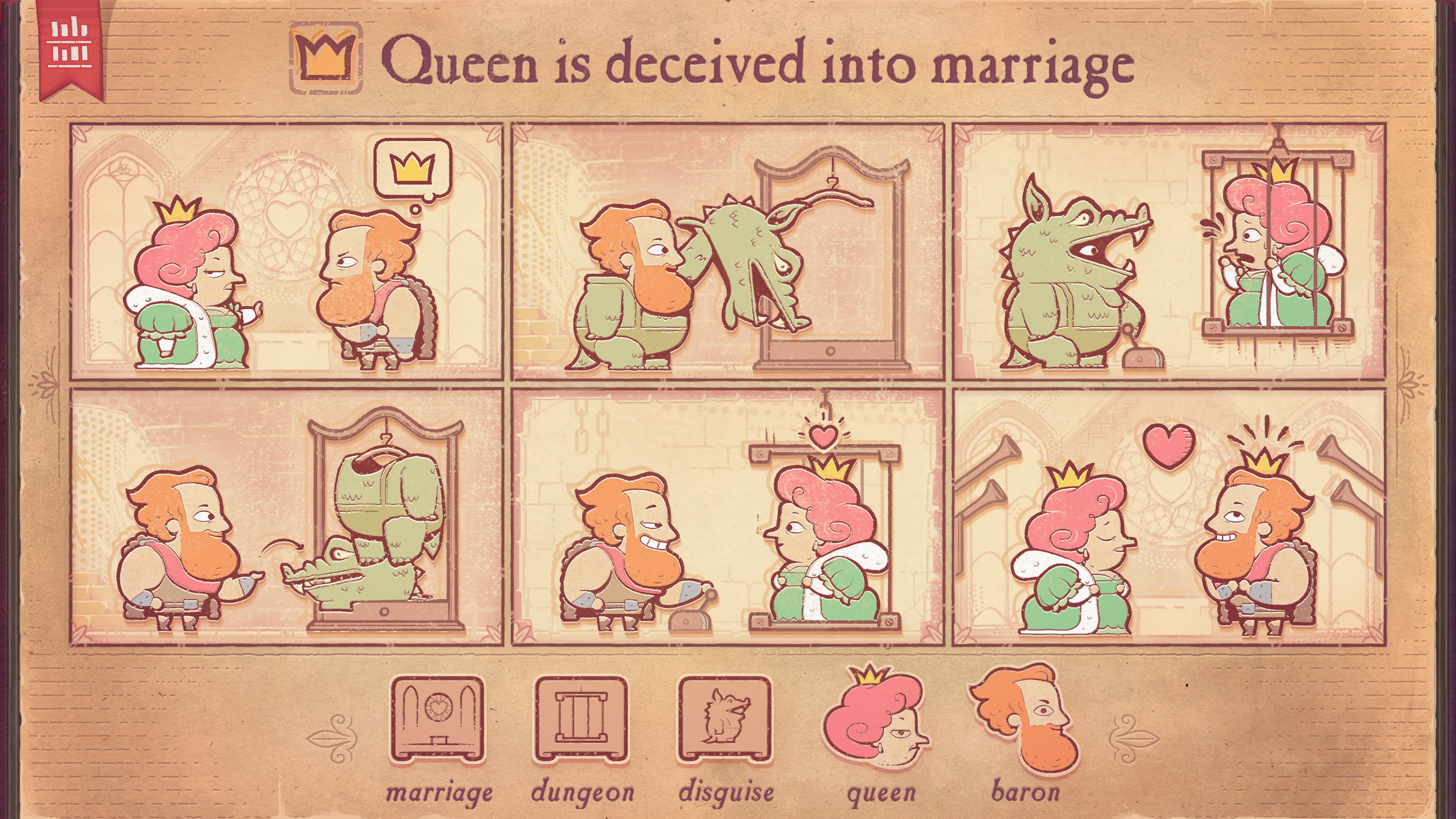When Storyteller's early prototype won the Nuovo award at the 2012 Independent Games Festival, its characters were pixelated, colors were saturated, and text boxes hovered above them while the prompt of the level was placed in the middle, but a lot has changed since then. Storyteller is a puzzle fantasy game where players create their own versions of classic stories—like Romeo and Juliet—by dragging and dropping elements that are provided to them into a comic-strip layout.
Some reviews have applauded indie game Storyteller for its storybook feel and satisfying page-turning animation. The characters, however, are at the core of the game; they get dropped into scenes and are able to react to one another or do an action on their own. That's the version it is today. Developer Daniel Benmergui told Game Rant in a recent interview that eventually the original design felt "cumbersome," or more complicated than it needed to be. He said he still needed a way to communicate with users the objective of the level, but pixel art was all that he knew how to make. However, he knew "it felt redundant because you could see the character, and you needed text. It felt wrong."
Storyteller Needed To Focus On Details
It wasn't until he had an artist on his team, Jeremias Babini, that Storyteller was revitalized into what it looks like today. Babini went for a completely different look, which Benmergui said matched how the game progresses through its levels. It has 13 chapters with four puzzles each with different scenes, goals, and characters each time. That objective seems to remain true to the original prototype, but what truly changed was the game's art and design.
We needed to add a lot more details to the characters than I had in the original prototype. That also meant that the characters had to be bigger, like larger on the screen. Once we did that, we were like, 'well, now how do they look?' Because we need to make a decision about the style. With pixel art, it was pretty simple to just add or remove some pixels, and the start is sort of there, but once you have detailed illustrations, it's like what is it going to look like?"
Its Art Looks Like Children's Story Books, But It's Not "Cute"
Characters that are featured in the game include Romeo, Juliet, Dracula, Snow White, Prince Charming, Adam, Eve, and many more. Through trial and error, players will see a character's personality and how they can manipulate that by changing the setting, introducing or taking away an element, and adding or removing another character in the frame. While Storyteller is compiled of various figures from different stories, what keeps it uniform is its art style.
"The artist eventually decided to go for a style that looks a bit like old children's story books, antique children's story books, but keeping a bit of the dark tint. The game looks nice, it's funny, but it's not exactly cute. It's a bit dark, which makes sense because the game goes into dark places sometimes. It's a game with humor, but it goes to dark places."
Its "dark" theme is easily recognizable at first glance, but it's especially true when players see the goal that they're given for a specific level as well as when they figure out the different outcomes that are possible for each. Some prompts that must be tackled include crime, marriage, heartbreak, death, and more; these motifs are sometimes combined like crime leading to a marriage or death leading to a heartbreak.
While Storyteller seems to thrive off of its unique take on rewriting known folktales, it may be something of an acquired taste for some folks. It should still be enjoyable to progress through the different levels and think outside-of-the-box for its alternate endings. It'll be interesting to see if Benmergui and publisher Annapurna Interactive add additional chapters, endings, or elements for players to experiment with in the future.
Storyteller is out now on PC and Switch.



